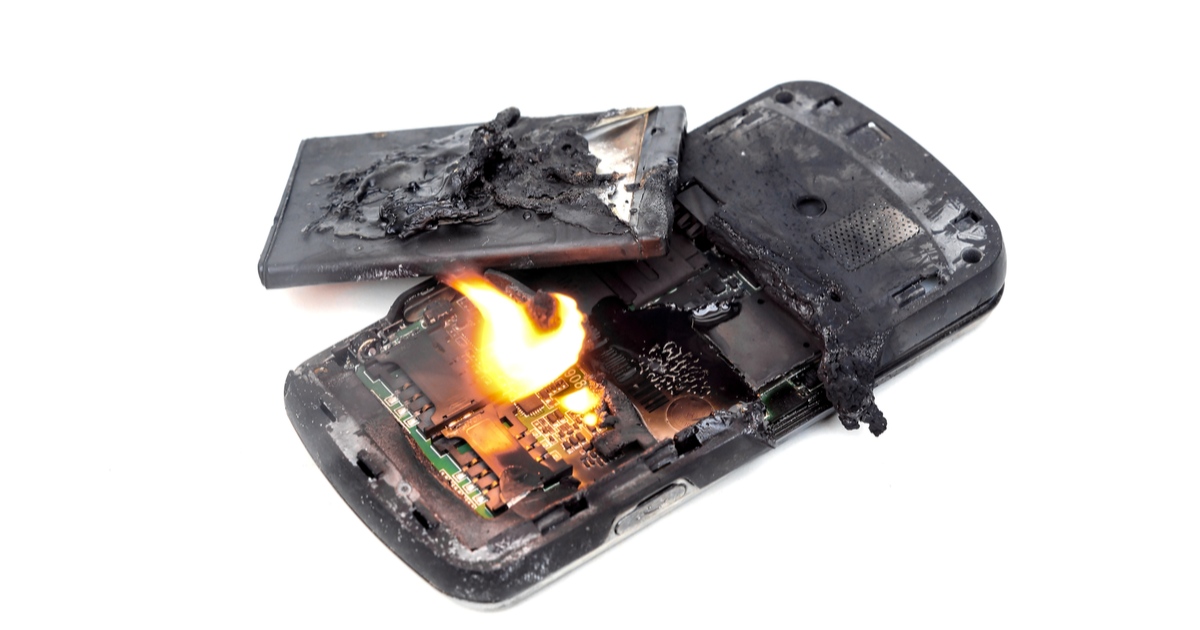Quality inspectors are human like the rest of us, and while it’s usually unlikely that they will let major QC issues slip through the net, it can happen.
Let’s examine why and how this happens, and how to mitigate or stop these mistakes…
What can cause professional quality inspectors to miss QC issues?
Performing a quality inspection prior to a shipment is like a filter. It won’t catch 100% of the problems 100% of the time. But it should catch the BIG issues over 90% of the time.
More and more importers are disillusioned about the value of QC inspections. Many of them think (and, depending on who they work with, they are not necessarily wrong) that way, way less than 90% of BIG QC issues are detected.
And they usually think that bribery is the main reason for this lack of effectiveness. However, I don’t agree.
I’ve listed below the major reasons why Chinese inspectors sometimes fail to notice quality control issues that are BIG in their clients’ eyes.
1. Laziness and lack of discipline
Most professional inspectors are guilty of this.
For example, they don’t pick cartons from every side and every height of the pile, not only to save time but also to avoid bothering the factory.
There are actually 2 separate issues here:
1.1 They take shortcuts to go faster
A very common example: during the visual check or the testing, they often don’t check as many samples as they should.
As a result, their report is based on their guesses after checking a sample size that is much smaller than their QC plan calls for. The statistical plan is not respected, and in the worst cases, the report means nothing at all.
1.2 They are unwilling to bother the factory
Many of them are tired of fighting. They want to work in a relaxed atmosphere, have a nice lunch, and avoid justifying themselves after complaints from the supplier.
For instance, they let the factory check (and repair!) the samples by themselves during the unpacking process. They pretend not to see this little game. And, of course, many problems are corrected before the inspection.
Is this bribery? Yes and no. More about this phenomenon here.
2. Lack of training
When they need to check garments, some quality control agencies see no problem in sending inspectors who have a very superficial knowledge of textile products. Some sophisticated clients can suspect it after reading the QC report, but it is difficult to prove.
These inspectors are very slow in taking measurements, so they ask the factory to measure… and they write what they are told. Oh, and there are many issues that their untrained eye just can’t notice.
This is just an example. The same thing happens with electronics, ceramics, furniture, etc.
3. Wrong calibration
As I wrote last week, QC Inspectors cannot follow different quality standards.
Send an inspector who is used to checking cheap products for monitoring a production of goods to be sold in high-end boutiques, and what will he conclude? “Everything is fine”. The reason is, it is so much nicer to what he usually sees.
Unfortunately, the high-end buyer might see defects that are important to him and that were completely undetected during the inspection.
If you work with QC firms that work for cheap buyers (promotional goods, mass markets in South America…), don’t ask them to check high-quality products.
4. Poor timing of inspection
Many buyers don’t understand why ONLY a final inspection (after production is over) can confirm the average quality of a batch.
When everything is packed, the quantity can be counted, and products can be picked randomly. The factory can’t play games.
What often happens is that suppliers are late. The job gets done when only 20% of the goods are completed, and maybe 1 or 2 cartons are packed. It is easy for a factory to hide the defective products and claim they are not made yet.
What to do in this case? A re-inspection at the supplier’s charge. Naturally, most Chinese suppliers pretend not to understand why they should pay for a re-inspection in this case, since the job got done.
So you should think now about the instructions to your QC agency/staff: should they abort the mission in such cases?
5. Rushed job
When an inspector is under intense timing pressure, he is forced to take all the shortcuts he can. There are actually 2 separate issues:
5.1 The inspector’s manager decides on an unrealistic sampling plan
This happens when the client is allowed to choose the sampling size in an online booking system, or when the QC company does not dare to say no to a client. It happens often in peak periods, like before Chinese New Year.
I have seen sampling plans including 8 different product references to check for conformity, and a total of 315 pieces to check visually, in 1 man-day! The result is the same as in point 1.1: the job is not done fully, and the report means nothing.
5.2 The inspector himself compresses the time of the job
After a few rushed jobs (see point 5.1), inspectors know they can get done in 2 hours.
Some of them conclude that they can do one job in the morning (for their employer) and one in the afternoon (on a freelance basis). This is a highly dangerous habit!
6. Corruption
Yes, corruption happens. Especially in situations with the following characteristics:
- The sums at stake are quite large,
- The importer puts a lot of pressure on the supplier to ship in time,
- When there is a problem that is acceptable (according to the inspector’s judgment) but is not in conformity with the client’s specifications.
I already described the way corruption works in a previous article. The point is, it is not as frequent as most people think.
7. Unclear or incomplete specifications
If you don’t communicate detailed requirements, and if you don’t ensure that the inspector has a reference sample in hand, you are asking for trouble.
This may seem obvious. But tens (hundreds?) of unprofessional or inexperienced importers commit this mistake. In the China sourcing game, letting another party guess some information is never a good idea.
This product specifications template for importers in China can help you to provide better specifications.
***
Oh, and how about factory interference? I am not including it in this list, because an inspector who doesn’t cut corners (see point 1.1 above) will avoid it. And, if it can’t be avoided, the job should be aborted.
What do you think? Am I forgetting an important cause that affects quality inspectors’ ability to spot QC issues?
***
You may also like these resources…
Interested in learning more about QC inspectors and inspections? Read these posts:
- 8 post series on managing QC inspectors
- How To Avoid Damaging After Sales Quality Problems
- Best Practices for Hiring, Training, and Evaluating QC Inspectors
- Don’t Count on QC Inspectors to Stop a Faulty Product Design
- QC Basics: What is a Quality Inspection? Context, Tools & Template
Editor’s note: This post was first published in 2012, but has been updated and republished.
Sofeast: Quality Assurance In China Or Vietnam For Beginners [eBook]
This free eBook shows importers who are new to outsourcing production to China or Vietnam the five key foundations of a proven Quality Assurance strategy, and also shows you some common traps that importers fall into and how to avoid or overcome them in order to get the best possible production results.
Ready to get your copy? Hit the button below:




Your descriptions in general are clear and correct, I just think under pt. 6 you are too careful with your estimation. Not only unprofessional importers often don’t provide the necessary information to enable the inspectors to do the job, even bigger, professional companies frequently hesitate, with a wide variation of explanations. One of the more silly, but nevertheless quite frequent ones: We need to protect our IP, we can’t tell you.
Thanks for the comment. Usually, bigger companies tend to have better specs. But it is not always the case, you are right.
As an “in-experienced” importer I have found it very difficult to find a good example of what specifications should be provided. When manufacturing domestically we often rely on the expertise of our local manufacturers to work to an agreed sample and we do not necessarily know the in depth details of how the product is made.
A spec sheet that I was shown on a recent trip to China for a clothing manufacturer specified the type of stitch to be used on each seam, the type of elastic to be used, individual sizes of each pattern pieces, finished garment measurements and acceptable -/+ tolerance measurements.
The more I research the more the more questions I am faced with, e.g. What is an acceptable -/+ tolerance for each measurement? Is there an industry standard for this kind of thing?
As a newbie, my opinion is, that if you are not an expert (or willing to become one) for the products that you are looking to have developed in China, then you should steer clear of offshore manufacturing until you possess such knowledge.
Yes, I heard many small buyers complaining about this. But I don’t think it is that big a problem.
The most important is to switch your mindset from “the manufacturer knows best and can be trusted” to “the manufacturer will propose something to me and it will be up to me to validate it and use it as the standard to comply with”.
If you purchase garments, you can ask the supplier for their size charts + samples in the right fabric and available colors (for sizing approvals from your side) + swatches in exact color (for color approvals, just after the bulk was dyed but before cutting starts) + photos of packaging used for other customers.
Laziness and lack of discipline is a big one that many Western importers may not consider is even a possibility. Many Chinese in manufacturing can also be complacent: because they have lived in China for their whole life, tend to be trusting and have the mindset, “I told the factory to fix it..they should fix it”. They don’t realize you have to follow-up, see for yourself, recheck and retest.
Also a subpoint to add “unwilling to bother the factory” is that many times, “face” or bashfulness can get involved. They don’t want to push the factory over a small point, the buyer is being too picky, let’s just go drink tea sort of mindset…..
A great blog with a lot of good points, Renaud!
Exactly!
I love the way you call it… The “let’s just go drink tea sort of mindset”… So true!
Hello,
This is such a great article, I really to read such interesting articles.
Great article..